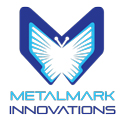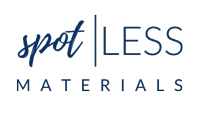The Biomimicry Institute and Ray C. Anderson Foundation are proud to announce the 9 finalist teams competing for the 2020 Ray of Hope Prize®. These cutting-edge startups are advancing nature-inspired solutions that address a wide range of problems. From eliminating toxic paints and dyes, to providing a new, regenerative approach to marine infrastructure, these game-changing companies are providing a ray of hope in the world today.
 change:WATER Labs Cambridge, MA
change:WATER Labs Cambridge, MA
This evaporative toilet technology was initially sparked by the work change:WATER Labs CEO had done for NASA as she was looking at water treatment options for the International Space Station. Now they are bringing this technology to countries that lack sewage infrastructure. Their tech evaporates water out of waste, similar to a mangrove plant, leaving behind solid waste.
Cypris Materials Berkeley, CA
![]() Structural color is found throughout nature. Organisms such as the cypris morpho butterfly appear bright blue because of nano- and micro- scale surface structures on their wings. Cypris Materials emulates this, and creates structural color paint that can work in the UV, visible, and infrared spectrum. Because of this, they can clear coat paint on glass and other surfaces, saving up to 20% on annual cooling costs. At the same time, they are eliminating the need for toxic pigments and dyes.
Structural color is found throughout nature. Organisms such as the cypris morpho butterfly appear bright blue because of nano- and micro- scale surface structures on their wings. Cypris Materials emulates this, and creates structural color paint that can work in the UV, visible, and infrared spectrum. Because of this, they can clear coat paint on glass and other surfaces, saving up to 20% on annual cooling costs. At the same time, they are eliminating the need for toxic pigments and dyes.
ECOncrete Tel Aviv, Israel
Tel Aviv, Israel
ECOncrete creates and designs coastal infrastructure projects that mimic the local marine ecosystem. By deeply understanding the natural ecosystem of their project, they design seawalls and other water retaining features. They combine this design process with their proprietary concrete admixtures, which promote the growth and regeneration of marine creatures, strengthening the structures over time.
Helicoid Industries La Quinta, CA
La Quinta, CA
Mantis shrimp have incredibly hard and durable clubs that they use to “punch” their prey, typically other shellfish. Their clubs travel faster than a bullet, and boil the surrounding water before impact. This smashing is done hundreds of thousands of times without damaging the club. Researchers found that the helicoid architecture of fibers in the clubs provide the incredible strength and toughness. Helicoid Industries is now applying this same helical design to composite materials, significantly increasing material hardness and toughness, allowing for longer lasting and lighter weight materials.
Metalmark Innovations Boston, MA
Boston, MA
The Metalmark team has created nanostructured materials that are inspired by the intricate structures found in the wings of butterflies, such as those in the Metalmark family. The company’s materials provide a high surface area and excellent mass transport, as well as a highly scalable bio-inspired method of fabrication. They catalytically break down harmful airborne pollutants such as formaldehyde, a known carcinogen, and other VOCs, including those related to unpleasant odors.
Nanomik Biotechnology Istanbul, Turkey
Istanbul, Turkey
Nanomik has developed a biopolymer-based microencapsulation technology that works like an exosome, a natural delivery and communication system produced by all types of living cells. Nanomik’s microcapsules can be applied onto fresh produce through pre-existing washes, or can replace chemical/synthetic preservatives in food products by releasing naturally occurring plant essential oils and other natural antifungal molecules, forming a protective edible layer.
 Pheronym Davis, CA
Pheronym Davis, CA
Beneficial nematodes have long been a staple in organic pest control. Through years of industry-leading research, the Pheronym team discovered they can increase beneficial nematode efficiency, and keep parasitic nematodes away, by emulating nematode pheromones. This natural form of pest-control is compliant with organic food production and provides a competitive alternative to synthetic pesticides.
 spotLESS Materials State College, PA
spotLESS Materials State College, PA
spotLESS Materials CTO first developed a super slippery surface inspired by the pitcher plant (known as SLIPS – Slippery Liquid-Infused Porous Surfaces) as a postdoc at Harvard’s Wyss Institute. In response to the Gates Foundation Reinvent the Toilet Challenge, this team created a new technology (LESS – Liquid-Entrenched Smooth Surfaces) to bring super slippery surfaces to existing toilets, focused on repelling human-waste without water. Their super-slippery coating can be applied in under 15 minutes, and can be applied on a variety of hard surfaces.
 Werewool New York, NY
Werewool New York, NY
Werewool has developed a novel way to produce biodegradable protein fibers that exhibit the properties of proteins found in nature. Their first use case is with the red fluorescent protein found in discosoma coral, and in the future they plan to create textiles that exhibit all kinds of colors and properties found in nature, eliminating the need for the toxic dyeing process. To do this, they first isolate the DNA sequence of the protein that is providing the performance property, then utilize biotechnology to create a new feedstock for the fibers.
These finalists were selected from among 190 applications, spanning 42 countries. We are happy to report that 7 of the 9 finalists are women-led companies, representing the diverse change we are seeing in the technology industry.
Stay tuned for the announcement of who will take home this year’s Ray of Hope Prize on Tuesday, August 25 at 9:50a MDT (GMT-6) at Circularity 2020 online. There’s still time to register and meet the startups that are pioneering new, nature-inspired solutions: sign up here.

